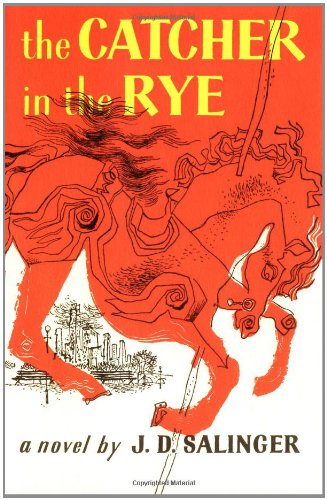All Nonfiction
- Bullying
- Books
- Academic
- Author Interviews
- Celebrity interviews
- College Articles
- College Essays
- Educator of the Year
- Heroes
- Interviews
- Memoir
- Personal Experience
- Sports
- Travel & Culture
All Opinions
- Bullying
- Current Events / Politics
- Discrimination
- Drugs / Alcohol / Smoking
- Entertainment / Celebrities
- Environment
- Love / Relationships
- Movies / Music / TV
- Pop Culture / Trends
- School / College
- Social Issues / Civics
- Spirituality / Religion
- Sports / Hobbies
All Hot Topics
- Bullying
- Community Service
- Environment
- Health
- Letters to the Editor
- Pride & Prejudice
- What Matters
- Back
Summer Guide
- Program Links
- Program Reviews
- Back
College Guide
- College Links
- College Reviews
- College Essays
- College Articles
- Back
The Catcher in the Rye by J.D. Salinger
Perhaps one of the most oxymoronic novels that I have read; after reading just a chapter the language bewitches you, you cannot put it down, yet simultaneously it never quite satisfies your desire for plot developments and leaves you feeling unfulfilled and infuriated.
First published in 1951, J.D. Salinger was writing at a time when the notion of 'teenage' and a distinguishable stage between childhood and adulthood did not yet exist. Through the complicated character that is Holden Caulfield, Salinger has succeeded in capturing a sense of the frustration felt at this unquantifiable age, chiefly due to the first person narration. This style of narration has allowed Salinger to not only create a teenager but to create one of the most layered characters in contemporary literature. The idiomatic and colloquial language personalise this novel to an adolescent of the late 1940s, and, of course, to America, where else would you hear "sonuvabitch" or "goddam" recklessly strewn about casual conversation?
Seeing the world through Caulfield's eyes is a bizarre sensation; landmarks are passed without reference whilst intricate analysis is prompted by a boy cleaning his fingernails, a baseball mitt or an ice-skater. Salinger writes pages and pages on one tiny, inconsequential thing and yet, somehow, covers nothing, the reader discovers nothing; this emphasises Holden's habit of focus on particular images, often something he finds particularly irritating or impressive. It is this nature of lengthy descriptions that still leave the reader pondering about its significance, or sometimes even, what Caulfield was describing which enslave the reader, leaves them to Salinger's mercy for one hundred more pages as they greedily devour the book in hope of satiating their hunger for the tale.
Nothing and nobody escapes Caulfield's keen scrutinising eye. A 'favourite' criticism of his is that of "phoniness" and he enjoys nothing more than commenting on the superficiality of American society: few actions pass by him without being labelled as "phony". In fact, it appears that, in true bildungsroman nature, all of Caulfield's criticisms stem from one problem- Holden's fear of the adult world. Even his name is suggestive of these fears; a 'caul' is a membrane that covers the head of a foetus during birth thus symbolising Caulfield's blindness due to his childlike mentality or his inability to see, and understand, the complexities of the adult world. In lieu of acknowledging these fears, Holden turns to criticism and time and time again thus isolating himself, in attempt to protect himself, which excludes himself from various sense of community and family.
Similar Articles
JOIN THE DISCUSSION
This article has 0 comments.

